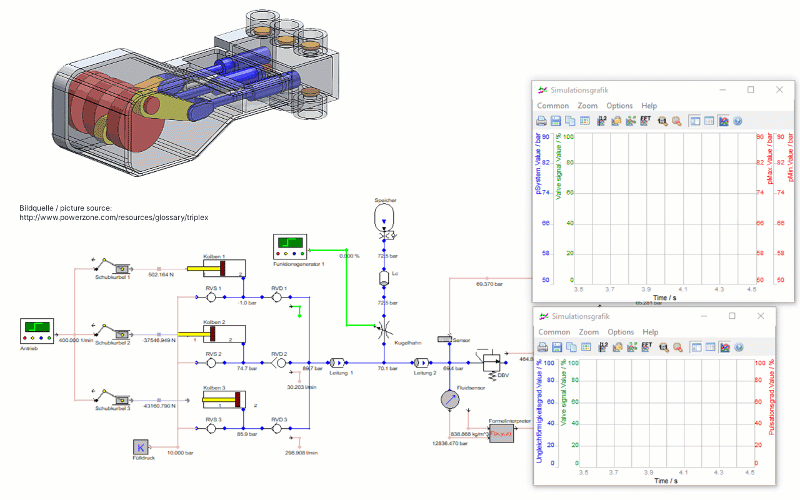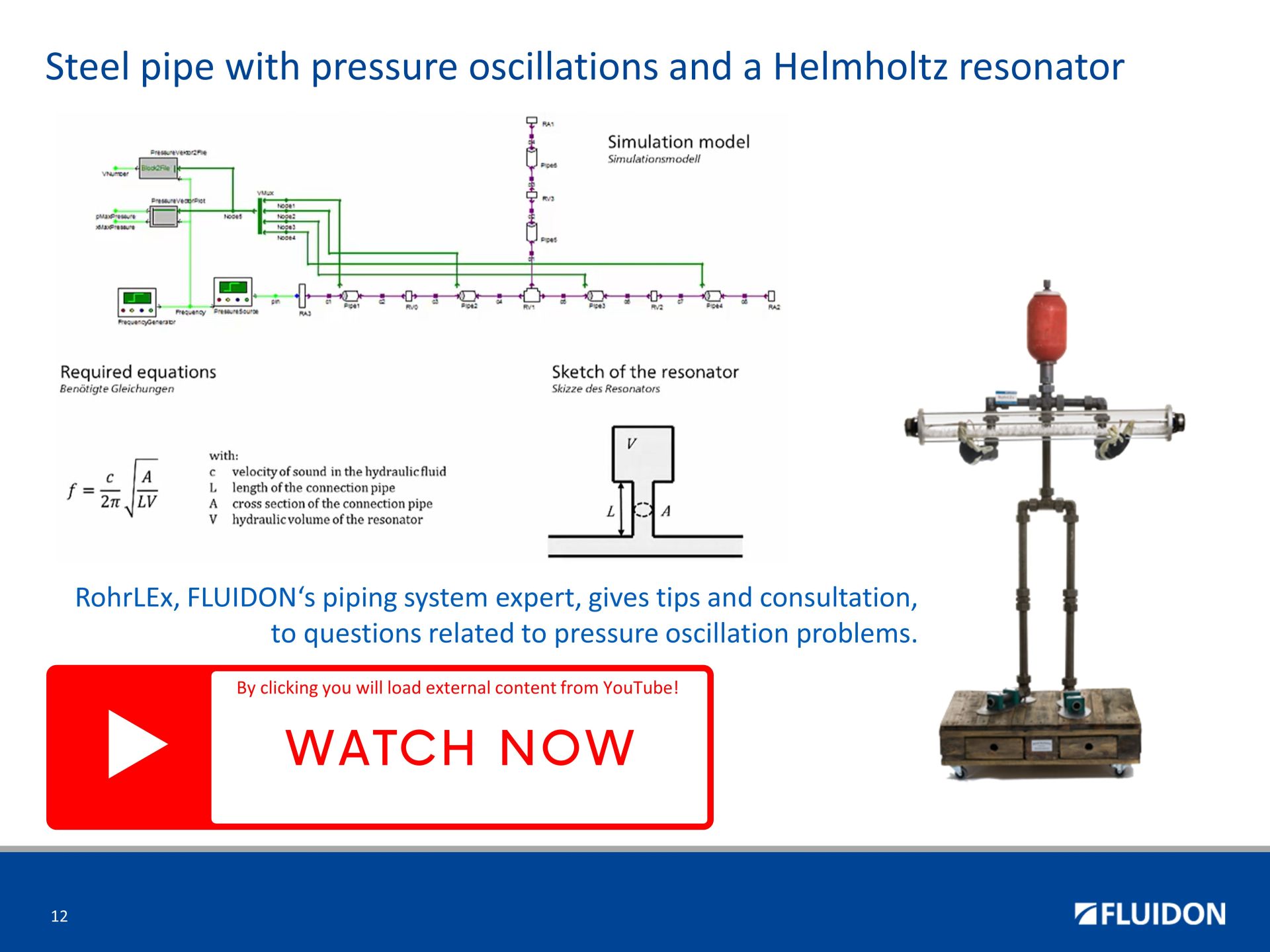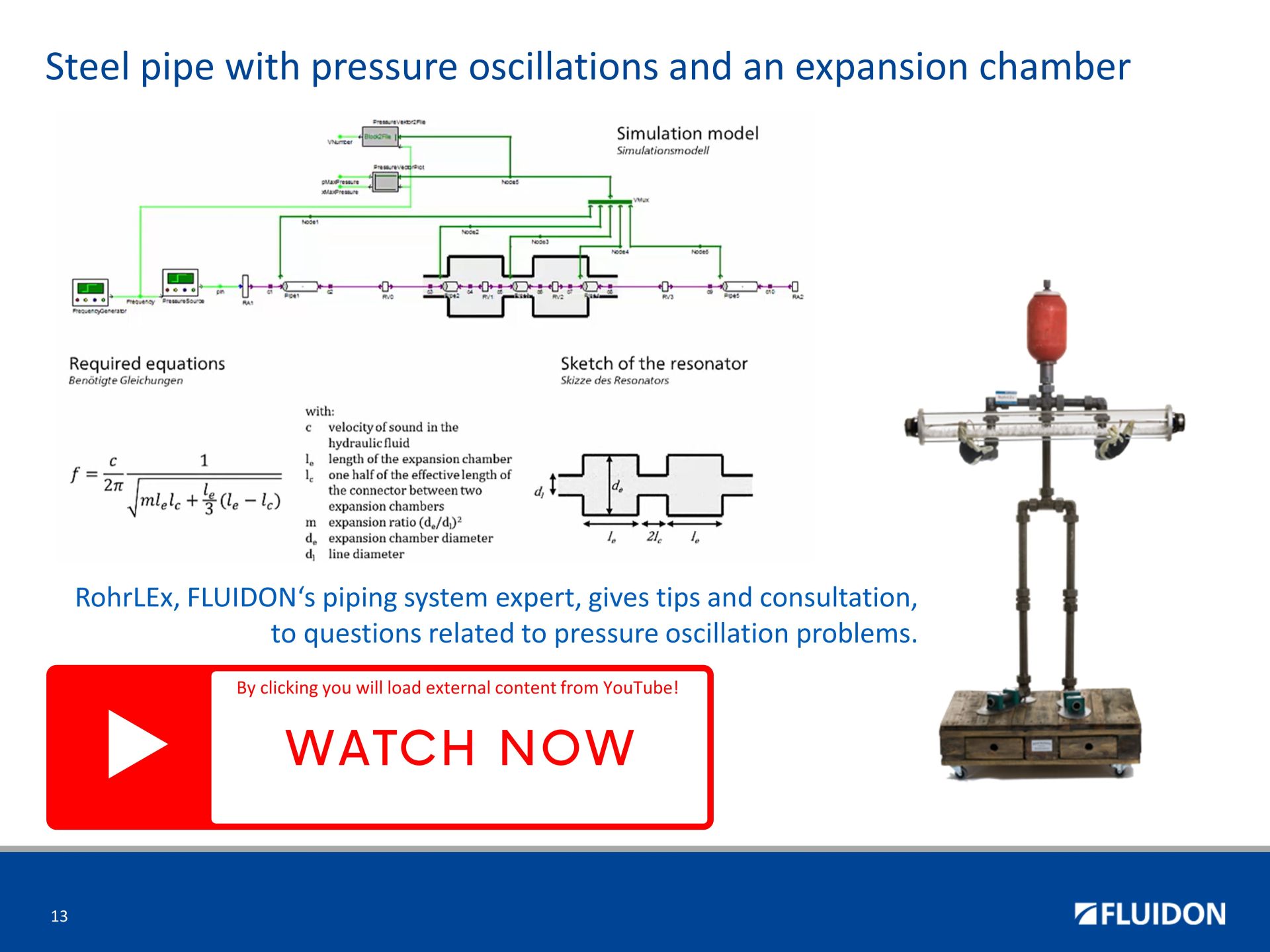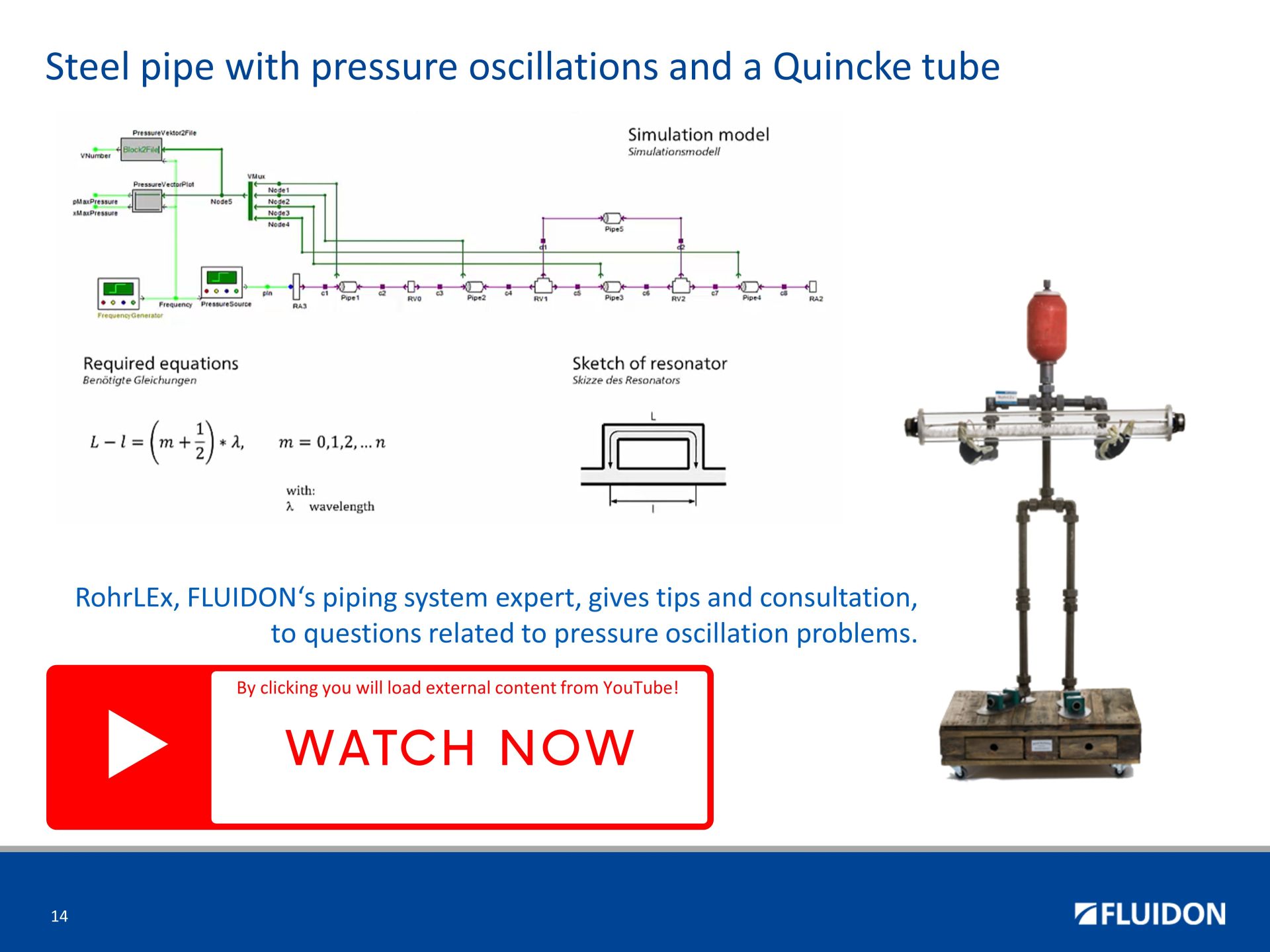Pulsation dampers in hydraulic piping systems
The task of pulsation dampers consists in attenuating the pressure fluctuations in hydraulic or pneumatic networks. This can be achieved through absorption silencers or through interference or reflection dampers.
In order to gain maximum attenuation it is not sufficient to align the damper design onto the required resonant frequency. It is also equally important to consider the dynamic response of remaining network and to place the damper at a position of maximum pressure fluctuation.
Below you will find informative videos showing practical examples of the dimensioning of
- Volume resonators (Helmholtz resonator)
- Branch resonators (λ/4 resonator)
- Series resonators
- interference line (Quincke tube)
and illustrate their optimal positioning.
The examples are based on the oscillation situation of a reference pipe without branching and focus on the damping of the pressure pulsation for the third order of oscillation.
The videos show how the positions with the maximum pressure amplitude are first determined for the different oscillation orders. The relevant pulsation damper sizing formulas are then presented to enable designers and developers to design the ideal pulsation damper for their specific requirements.
Discover these valuable resources to deepen and apply your knowledge of effective pulsation damping. Fluidon will be happy to assist you with the dimensioning and positioning of your individual pulsation damping measure.

Use of a volume resonator (Helmholtz-Resonator) for pulsation damping
The Helmholtz resonator principle can be used by adding a volume in a side branch. The fluid in the volume and its connecting line form a resonant subsystem. Only pulsation waves at frequencies below the particular resonant frequency of the resonator can be attenuated by this arrangement. No useful attenuation effect is gained at higher frequencies [1].
[1] Akers, A., Gassman, M., and Smith, R., 2006, "Hydraulic Power System Analysis", CRC Press - Taylor & Francis Group, ISBN: 0-8247-9956-9, pp. 354
Use of a side branch resonator for pulsation damping
Liquid-filled, quarter-wavelength, side branch accumulators reduce pulsations in a narrow frequency band and can be effective on constant-speed positive displacement pumps. However, in variable-speed systems, accumulators with or without a bladder can be made more effective by partially charging them with a gas (nitrogen or air) since the gas charge cushions hydraulic shocks and pulsations [1].
[1] J. C. Wachtel, F. R. Szenasi,
Section 3.6, Displacement Pump Performance, Instrumentation, and Diagnostics, pp. 3.113
Use of a in-line resonator for pulsation damping
An expansion-chamber muffler consists of one or more chambers of larger cross-sectional area than the main pipe, which are in series with the pipe.
The expansion-chamber muffler provides attenuation by taking advantage of the reflections from the junctures at which the cross sectional area changes.
The theory shows that below a certain frequency, which is called the cut-off frequency, the muffler is relatively ineffective [1].
[1] Davis,D., et al. National Advisory Committee for Aeronautics,Technical Note 2893, Theoretical and Measured Attenuation of Mufflers at Room Temperature without Flow, with Comments on Engine-Exhaust Muffler Design, Langley Aeronautical Laboratory 1953, pp. 49
Use of an interference line (Quincke Tube) for pulsation damping
The Quincke Tube is an arrangement that splits flow equally between two lines of analytically selected lengths. The two flows are then recombined at a downstream junction. The device works because the two flows are out of phase when merged because they travel different distances. A fundamental frequency and its harmonics can be cancelled out with this type of line arrangement [1].
[1] Akers, A., Gassman, M., and Smith, R., 2006, "Hydraulic Power System Analysis", CRC Press - Taylor & Francis Group, ISBN: 0-8247-9956-9, pp. 354







